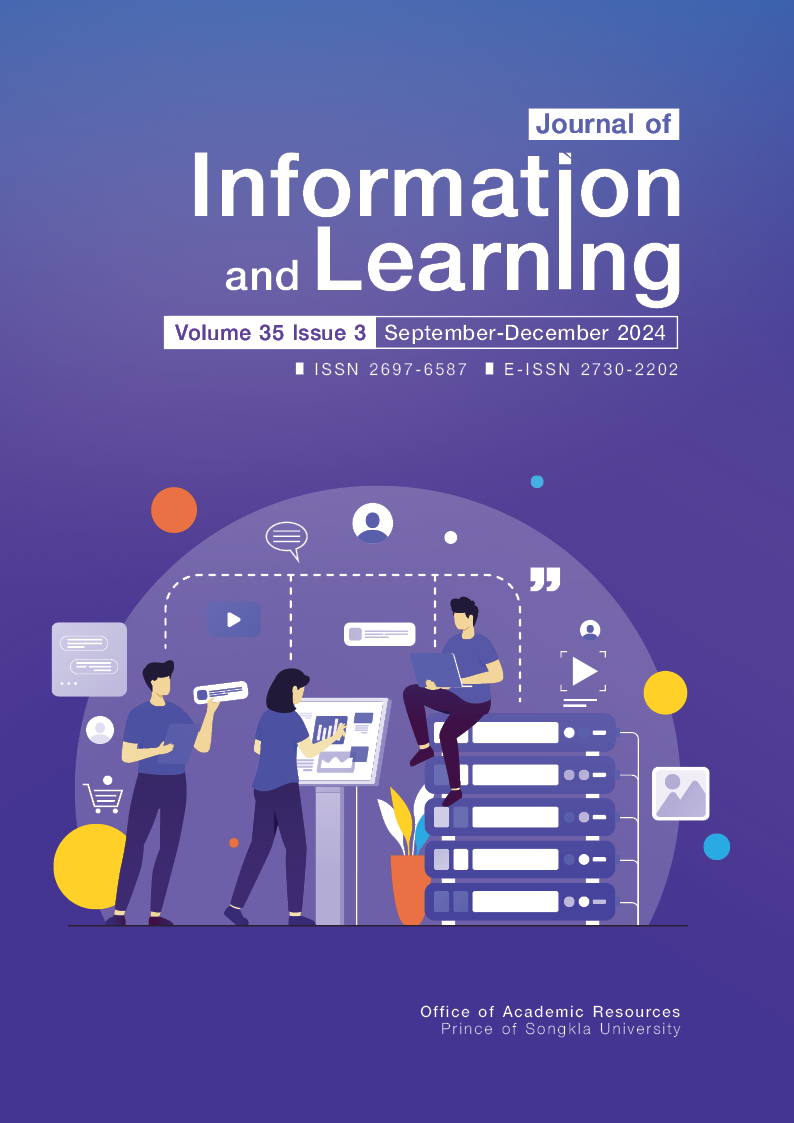The The Development of Interactive Exhibitions to Enhance Human Rights Education for Junior High School Students
Main Article Content
Abstract
This research aimed 1) to design and develop an interactive exhibition to promote human rights understanding among junior high school students: 2) to assess the exhibition’s effectiveness in enhancing student knowledge and understanding of human rights before and after the intervention; and 3) to explore student opinions on the use of the interactive exhibition. The voluntary sample group comprised 30 junior high school students. The experimental tool was an interactive exhibition to promote understanding of human rights, and the data collection instrument included a knowledge assessment test; and a questionnaire. The data were analyzed using the mean, standard deviation, and dependent t-test. Results revealed that 1) the interactive exhibition had a very good level of content (M = 4.89, SD = 0.27) and media quality (M = 4.69, SD = 0.50), that 2) average student understanding of human rights after the intervention was significantly higher than before, at a .01 level, and that 3) overall student opinion on the interactive exhibition was at the highest level of agreement (M = 4.71, SD = 0.51).
Article Details

This work is licensed under a Creative Commons Attribution-NonCommercial-NoDerivatives 4.0 International License.
The Journal of Information and Learning is operated by the Office of Academic Resources, Prince of Songkla University. All articles published in the journal are protected by Thailand copyright law. This copyright covers the exclusive rights to share, reproduce and distribute the article, including in electronic forms, reprints, translations, photographic reproductions, or similar. Authors own copyrights in the works they have created as well as the Office of Academic Resources. The Journal reserves the right to edit the language of papers accepted for publication for clarity and correctness, as well as to make formal changes to ensure compliance with the journal's guidelines. All authors must take public responsibility for the content of their paper.
References
Ahmad, S., Abbas, M. Y., Yusof, W. Z. M., & Mohd.Taib, M. Z. (2015). Adapting museum visitors as participants benefits their learning experience? Procedia-Social and Behavioral Sciences, 168, 156-170. https://doi.org/10.1016/j.sbspro.2014.10.221
Amnesty International Thailand. (2019). Human right human lō̜ng: khūmư̄ kitčhakam sū kān yū rūam kan bǣp khaorop sitthi manutsayachon [Human rights human long]. Amnesty International Thailand.
Chaemkrachang, K. (2022). Kān songsœ̄m sitthi manutsayachon nai ngān sangkhomsongkhro̜ [Promoting human rights in social work]. Thammasat University.
Chaiyah, N. (2017). Innovation and edutainment technology for interpretation in museum: A case study of Nitatrattanakosin [Master's thesis, Thammasat university]. TU Digital Collections. https://digital.library.tu.ac.th/tu_dc/frontend/Info/item/dc:137200
Chanrangsri, W., & Pholprasert, A. (2023). The participatory Thai art exhibition model to promote the application of Thai art in daily life for youth. Journal of Social Science and Cultural, 7(8), 220-231. https://so06.tci-thaijo.org/index.php/JSC/article/view/266575
Constitution drafting commission. (2017, April 6). Constitution of the Kingdom of Thailand. CDC.parliament. https://cdc.parliament.go.th/draftconstitution2/ewt_dl_link.php?nid=1038&filename=index
Interaction Design Foundation. (2016, June 2). What is interaction design (IxD)? Interaction Design Foundation. https://www.interaction-design.org/literature/topics/interaction-design
Kaemanee, T. (2024). Sāt kānsō̜n (23th ed.) [Pedagogy science]. Chulalongkorn University.
Lunsucheep, C. (2019). A design guidelines for interactive media exhibition: A case study of “Decoding Thainess” exhibition, Museum Siam [Master's thesis, Thammasat university]. TU Digital Collections. https://digital.library.tu.ac.th/tu_dc/frontend/Info/item/dc:180000
National Human Rights Commission of Thailand. (2021). 2021 Human rights assessment report of Thailand. Amarin Printing and Publishing. https://www.nhrc.or.th/th/situation-assessment-report-thailands-human-rights/94
Nuangchalerm, P. (2024). Wičhai kānrīan kānsō̜n (7th ed.) [Research teaching]. Chulalongkorn University.
Pietroni, E. (2019). Experience design, virtual reality and media hybridization for the digital communication inside museums. Applied System Innovation, 2(4), Article 35. https://doi.org/10.3390/asi2040035
Pinijneuk, L. (2021). Kānʻō̜kbǣp kānčhatkān rīan kānsō̜n dūai ADDIE Model [Instructional design with ADDIE Model]. Butsarakham.
Piyakulchaidech, W. (2018). Human rights: Some problems within the concept and the conceptual importation to Thai society. Sukhothai Thammathirat Open University Journal, 31(2), 6-24. https://so05.tci-thaijo.org/index.php/stouj/article/view/206762
Princess Maha Chakri Sirindhorn Anthropology Centre. (2008). Kāo pai dūai kan [Move forward together]. https://db.sac.or.th/museum/magazine/newsletter?page=2&per-page=10
Srisaard, B. (2013). Kānwičhai bư̄angton (9th ed.). [Basic research]. Suweerivasarn.
Sriwirat, W., & Sriphan, A. (2023). Social studies learning activities to enhance human rights through life skill-based education for high school students in Phichit province. Panya Journal, 30(1), 1-13. https://so06.tci-thaijo.org/index.php/panya-thjo/article/view/261576
Sukta, P., Mangkhang, C., & Dibyamandala, J. (2021). Creation of participatory learning plans in social studies to promote peaceful living skills of ethnic students. Journal of MCU Nakhondhat, 8(5), 103-113. https://so03.tci-thaijo.org/index.php/JMND/article/view/252204
Waythongkhum, Y., Vimolsilp, U., Namwong, T., & Khunsang, Y. (2020). Innovation and digital technology for education. Ramkhamhaeng University.
Wongsuwan, W. (2021, November 16). 100 pī tưk rao: phư̄nthīmai hǣng kānrīanrū [100 years of our building: a new space for learning]. Museumsiam. https://www.museumsiam.org/upload/cms_file/1637752659_425.pdf


